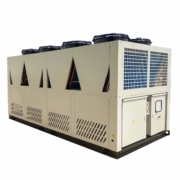Introduction
New Jersey, like much of the nation, stands at a critical juncture in its battle against substance use disorder. As the opioid crisis continues to evolve and fentanyl-related overdoses increase, understanding the labyrinthine rehabilitation system becomes paramount for residents seeking help or supporting loved ones. Behind each statistic lies a family navigating confusion, urgency, and often despair. Fortunately, the Garden State offers a range of structured programs designed to guide individuals from crisis to recovery—if one knows where and how to look.
Overview of Substance Use in New Jersey
Substance use trends in New Jersey reflect a complex and shifting landscape. According to the New Jersey Department of Human Services, more than 82,000 residents were admitted into treatment programs in a recent year. Opioids—particularly heroin and increasingly, fentanyl—remain the most commonly reported primary substances. However, alcohol, cocaine, and prescription medications also contribute heavily to the state’s addiction burden.
Urban counties such as Essex, Camden, and Atlantic report higher incidence rates, often tied to socioeconomic variables. In rural areas, however, access to services becomes the principal issue. Adolescents and older adults represent growing at-risk populations, demanding tailored interventions. Recognizing these demographic nuances is crucial to choosing the right treatment modality.
Convenient Access to Specialized Care from Home
Telemedicine has revolutionized how individuals access addiction treatment, offering flexibility and privacy without compromising quality. Patients struggling with opioid dependence can now connect with certified providers through secure virtual platforms, often eliminating long wait times.
Many suboxone doctors online that take insurance are available nationwide, allowing patients to receive both prescriptions and counseling from the comfort of home.
These services are especially beneficial for those in rural or underserved areas where in-person clinics are scarce. With insurance coverage reducing out-of-pocket costs, online Suboxone treatment is becoming a practical and effective solution for long-term recovery support.
Types of Rehab Programs Available
New Jersey’s rehabilitation landscape is not monolithic. It encompasses a spectrum of care levels and philosophical approaches. Understanding the distinction between programs is essential.
Inpatient vs. Outpatient Care:
Inpatient rehab offers a structured, immersive environment, often recommended for severe addictions or dual diagnoses. These facilities provide 24/7 supervision and an intensive therapeutic regimen. Outpatient care, on the other hand, allows individuals to maintain personal obligations while attending scheduled sessions. It’s best suited for those with a stable home environment and moderate addiction severity.
Detoxification Centers:
Before treatment begins, many individuals require medical detox to safely eliminate substances from the body. These centers often serve as the first critical point of contact, equipped to manage withdrawal symptoms under clinical supervision.
Medication-Assisted Treatment (MAT):
MAT combines FDA-approved medications like Suboxone or Methadone with counseling. Particularly effective for opioid use disorder, MAT reduces cravings, minimizes relapse risk, and stabilizes neurological function over time.
Holistic and Alternative Programs:
Some centers integrate yoga, acupuncture, art therapy, and mindfulness practices into their recovery plans. While not replacements for clinical therapy, these modalities enhance emotional regulation and overall well-being.
How to Access Rehab Services
Navigating entry points into the rehab system can feel daunting. Fortunately, several channels streamline access.
Insurance and Medicaid:
Many private insurance plans, as well as New Jersey Medicaid (NJ FamilyCare), cover a wide array of treatment services. Recent state-level initiatives have aimed to reduce prior authorization hurdles for urgent detox and inpatient care.
State-Funded Options:
For uninsured residents, the Division of Mental Health and Addiction Services (DMHAS) provides access to state-funded beds and outpatient slots. While demand often exceeds availability, these programs offer critical lifelines for the underserved.
Referral Systems and Hotlines:
The New Jersey Addiction Services Hotline (1-844-ReachNJ) operates 24/7, connecting callers with trained professionals who can guide them toward appropriate care. Hospitals, primary care physicians, and social workers also play key roles in referrals.
What to Expect During Treatment
Entering rehab is a pivotal moment—one marked by uncertainty, hope, and transformation.
Assessment and Intake:
Treatment begins with a comprehensive assessment that evaluates physical health, psychiatric history, and substance use patterns. This informs the individualized treatment plan that follows.
Therapy Models:
Cognitive Behavioral Therapy (CBT), Dialectical Behavior Therapy (DBT), and group counseling form the backbone of most programs. These evidence-based modalities address thought patterns, emotional triggers, and interpersonal skills.
Family and Community Involvement:
Many programs encourage or mandate family participation. Family therapy sessions unpack enabling behaviors, foster communication, and help rebuild fractured relationships. Community support—peer groups like Narcotics Anonymous or Smart Recovery—reinforces accountability post-treatment.
Challenges and Barriers to Access
Despite the breadth of services, substantial obstacles remain.
Stigma and Mental Health:
Many individuals delay seeking help due to societal stigma. Fear of judgment—by employers, family, or peers—compounds internalized shame, making outreach more difficult. The co-occurrence of mental health disorders often complicates diagnosis and treatment, demanding integrated care models.
Economic and Geographic Inequities:
Low-income residents face disproportionate barriers, from lack of transportation to insufficient insurance coverage. Rural areas frequently suffer from a dearth of local facilities, forcing long-distance travel for care.
System Overload:
Waitlists for high-quality inpatient programs can extend weeks or months. Overburdened systems mean many people fall through the cracks during moments of vulnerability.
Recovery and Life After Rehab
Rehab is not the destination—it’s the threshold.
Sober Living and Aftercare:
Transitional housing, or sober living homes, offer structured environments for individuals not yet ready to return to independent living. Aftercare programs, including outpatient therapy and recovery coaching, sustain progress.
Employment and Vocational Support:
Programs like New Jersey’s “Recovery Friendly Workplaces” initiative help individuals re-enter the workforce with dignity. Job training, resume workshops, and mentorships mitigate the economic fallout of addiction.
Preventing Relapse:
Relapse is a common, though not inevitable, part of recovery. Building a long-term support network, practicing self-awareness, and accessing continued therapy are pillars of relapse prevention. Technological tools, including recovery apps and telehealth therapy, offer new layers of support.
A Closer Look at Treatment Options
For individuals managing opioid dependence, medication-assisted treatment plays a crucial role in recovery. One common option is the Suboxone round orange pill, which typically contains a combination of buprenorphine and naloxone. This formulation helps reduce withdrawal symptoms and cravings without producing the euphoric effects of opioids.
Designed for sublingual use, the pill dissolves under the tongue and provides a controlled, sustained release. Its distinct color and shape help distinguish it from other medications, ensuring proper administration. When used as prescribed and combined with counseling, this treatment can significantly improve outcomes and support long-term sobriety for those in recovery.
Conclusion
Understanding New Jersey’s rehab system is both a personal and civic imperative. By illuminating pathways, reducing stigma, and expanding access, communities can become catalysts for transformation. Addiction does not discriminate—but neither should recovery. With informed choices and sustained support, residents can navigate the state’s rehabilitation ecosystem and emerge not just sober, but stronger.












